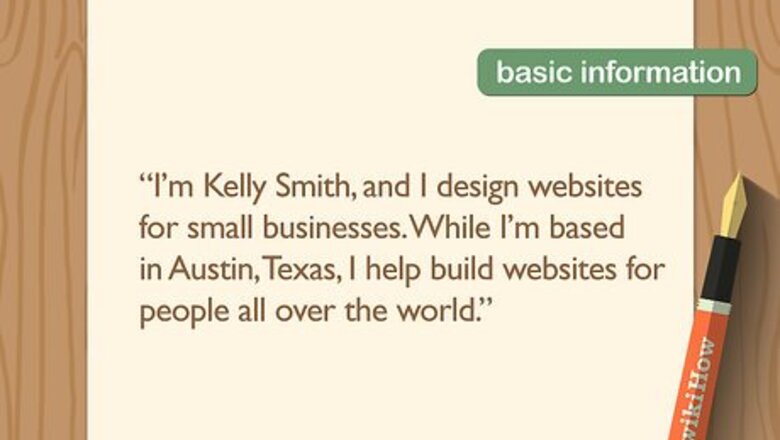
views
Writing an Introduction for a Professional Portfolio
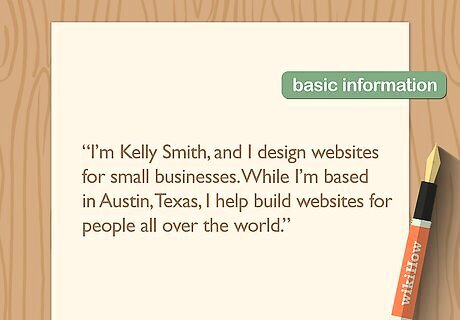
Tell your readers who you are and what you do. This should be the first line of your introduction. Tell them your name, what your job is, and other important information about yourself, like the city you’re based in. You might be writing an introduction for a portfolio that shows off your marketing, writing, teaching, or construction skills. It is like a cover letter that gives information about what they can find in the portfolio. You might say, “I’m Kelly Smith, and I design websites for small businesses. While I’m based in Austin, Texas, I help build websites for people all over the world.”
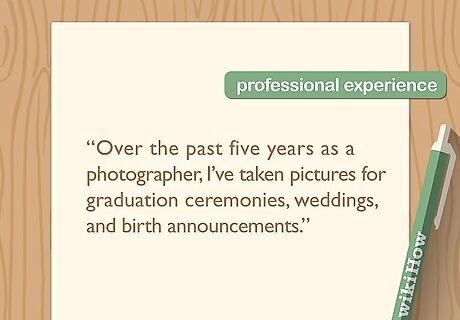
Decide which professional experience you’ll include. Your introduction should be a brief summary of your work, not a detailed explanation of everything you’ve accomplished. Choose one or two work experiences to describe, or list a few projects you’ve finished so the reader gets an idea of what you’re able to do. And why you are suitable for the job. You might say something like, “Over the past five years as a photographer, I've taken pictures for graduation ceremonies, weddings, and birth announcements." Choose experiences where you were in charge of the project, or that had a positive impact on you and your company.

Add a few personal details to make you more relatable. If your portfolio is online and you’re trying to convince people to use your services, it’s a good idea to add a couple fun facts about yourself to make you more likable. These could be things like you’re a dog owner, you love hiking, or you’ve always wanted to travel the world. Keep the personal details short and to the point, as their main purpose is to add a little life to your introduction. You could mention you have three children, love cooking, or learned to code when you were seven years old.
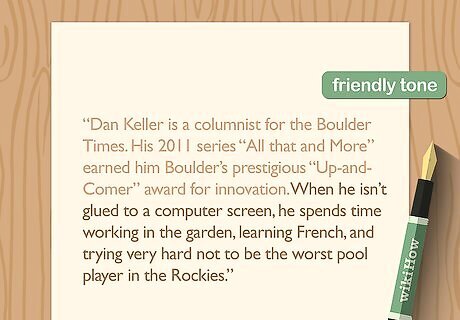
Use a friendly but professional tone. While your writing doesn’t need to be super uptight and formal, it should still be professional and well-written. Aim for a writing style that’s friendly and inclusive, writing as you would normally speak to someone while representing your business. Avoid using slang in your introduction to make it more presentable. Write in the first person for a more personal feel. Keeping your introduction conversational will make people more likely to feel like they can reach out to you.
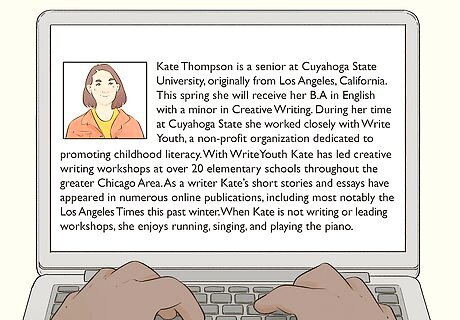
Include a picture of yourself so people can visualize you. This works well if you’re using a website where people can get to know you through your portfolio. Make sure the picture is professional and only of you, cropping it if necessary. Wear professional clothing related to your job, and smile in the picture to look friendly and welcoming. Make sure the picture isn’t blurry or too dark.
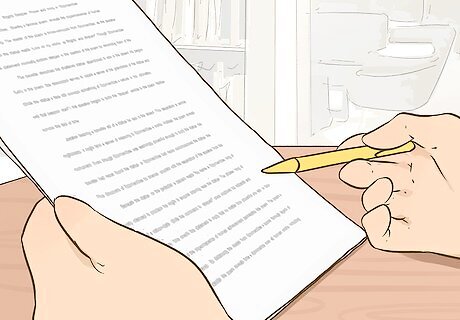
Read over the final version of your introduction. Once you’ve finished writing your introduction, it’s important to proofread and edit it to ensure it looks professional. Look for any spelling or grammar mistakes, asking a friend to read over it for you too if desired. While you’re reading over it, make sure the introduction isn’t too lengthy—a few paragraphs or one page is more than enough. Check the layout of your introduction if it's online, making sure all of the wording and any pictures show up normally.
Writing an Introduction for an Educational Portfolio
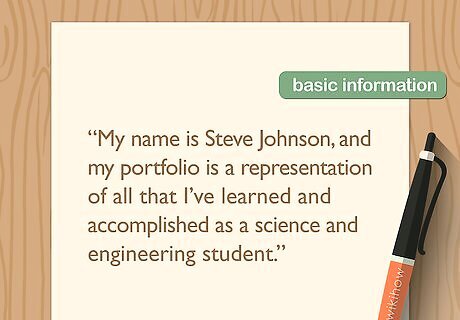
Tell the reader your basic information first. This includes your name, purpose of writing the portfolio, and any other information that is required of you. The important basic information might be different depending on the reason you’re writing the educational portfolio, but stating your name and what you’re doing is a great start. For example, you could say, “My name is Steve Johnson, and my portfolio is a representation of all that I've learned and accomplished as a science and engineering student." This should only be 1-3 sentences. You can write in the first person to engage your reader the most.

Describe the contents of your portfolio. Summarize the main points of your educational portfolio. This should only take a few sentences. Think of this part of the introduction as a book summary you might read to decide if you want to read a book—keep it to the point while providing important information. Avoid listing everything you’ll be talking about in the portfolio. Instead, you can use a table of contents for this. Include any major themes you'll be talking about, or the main message of your portfolio.

Explain what makes your portfolio unique and your own. Tell your readers what makes your thoughts or experience stand out from other people’s. This ensures your portfolio is memorable and a reflection of yourself. You might write that your student experience is unique because you’ve spent 3 years working in a lab researching cancer, or your poetry is published in several different magazines across the country. Include this near the end of your introduction to keep it fresh in the reader's mind.
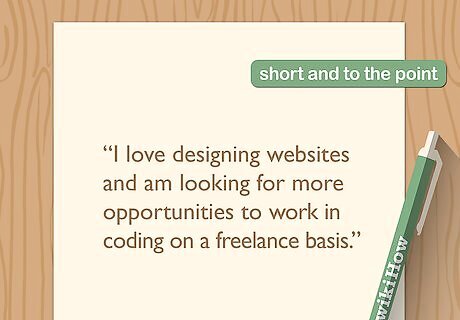
Keep the introduction short and to the point. If your introduction is too long, people won’t stay engaged and want to read it. Try to make each sentence you write purposeful and to the point. Avoid going into too much detail. Roughly 2-3 paragraphs is an ideal introduction length.

Make sure you follow any specific guidelines you were given. If you’re writing this portfolio for a class, it’s likely that your teacher or professor will have certain things they want you to include in your introduction. Follow their guidelines and check to make sure you have everything that’s needed. If your teacher didn’t give you any guidelines, ask them if there are specific things they want you to include.

Proofread and edit your introduction once you’re finished. Fix any typos, grammar mistakes, or misspelled words so that your portfolio looks polished and professional. It’s a good idea to have someone else read over it to look for any mistakes as well. Reading your introduction out loud can help you find any mistakes you might have missed.




















Comments
0 comment